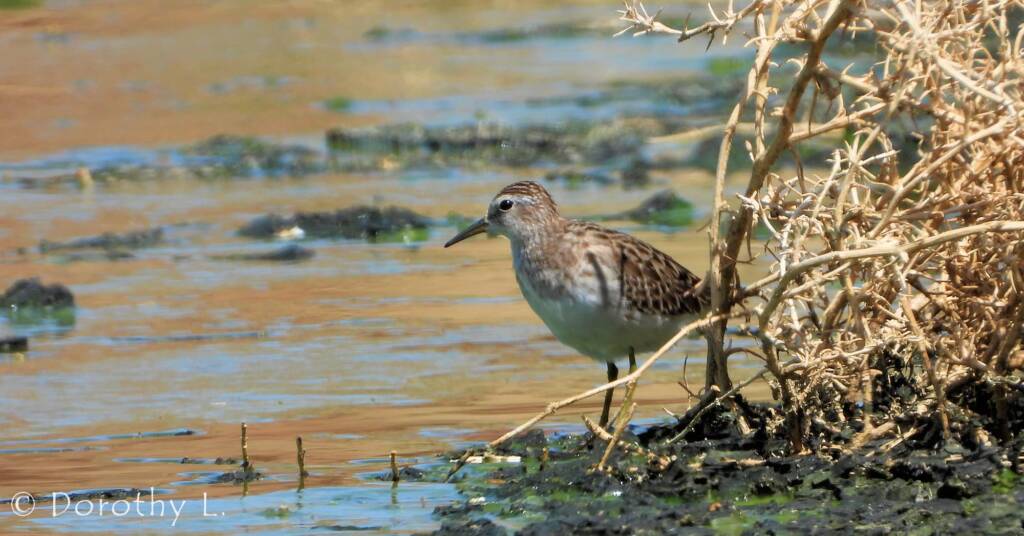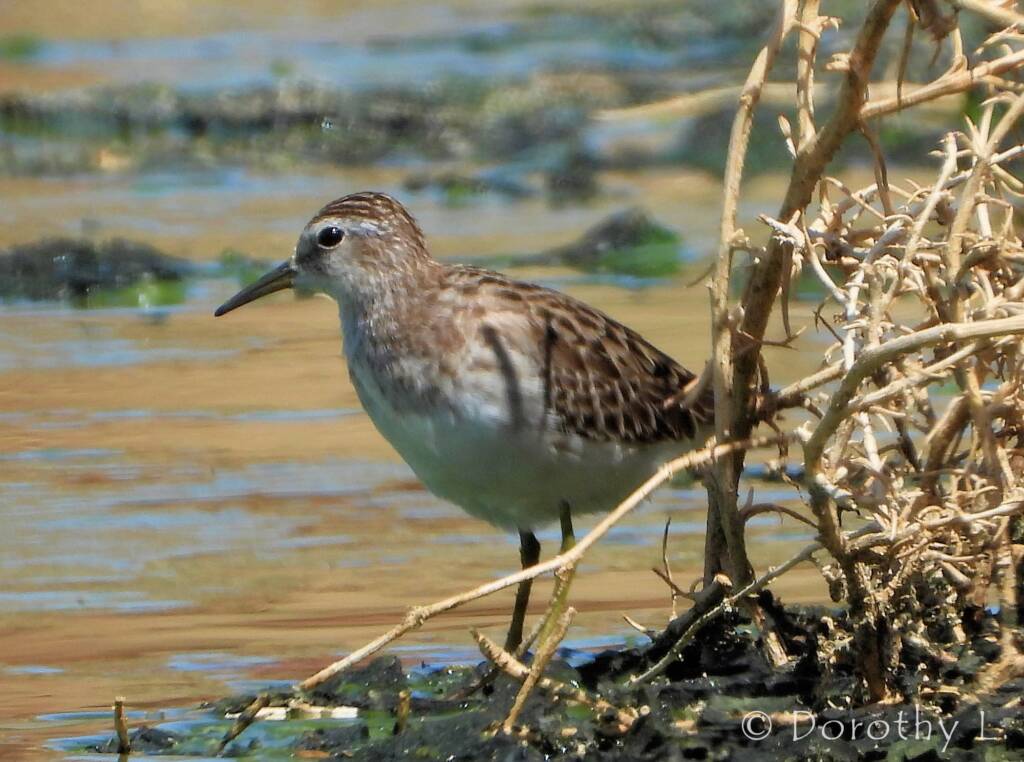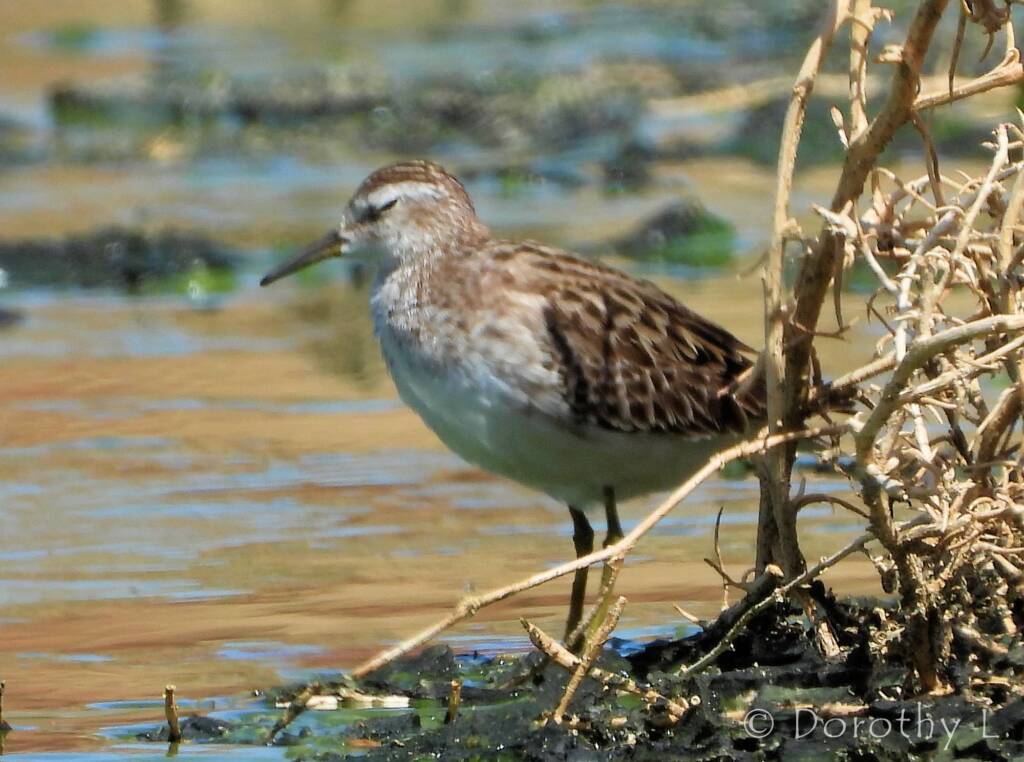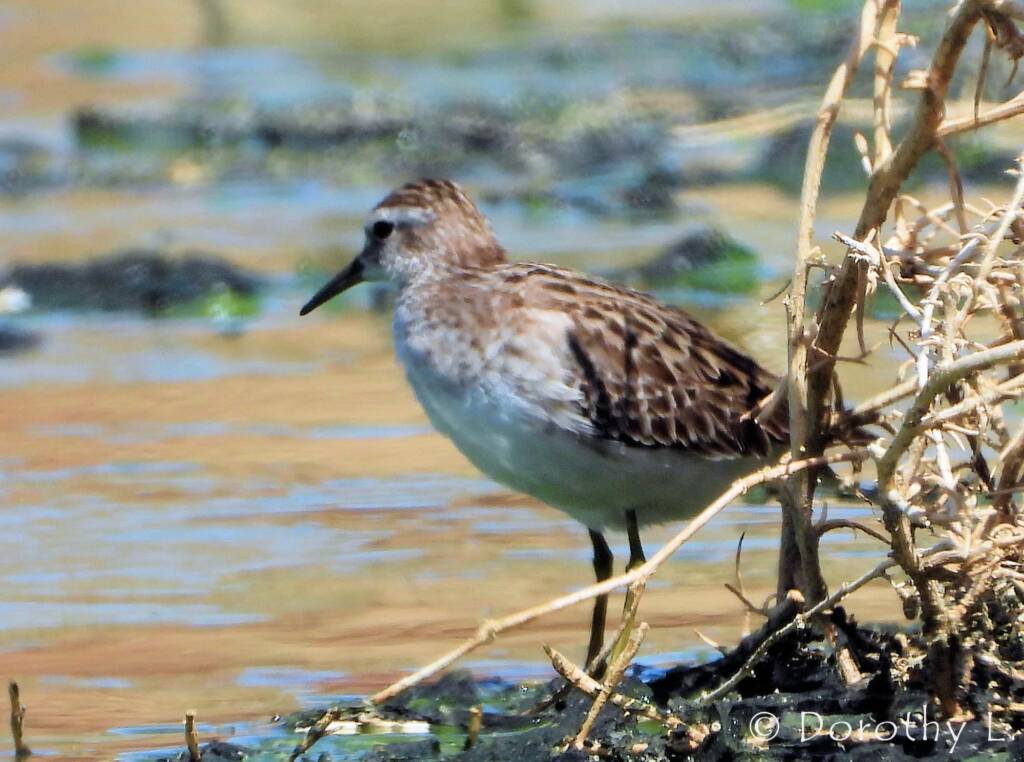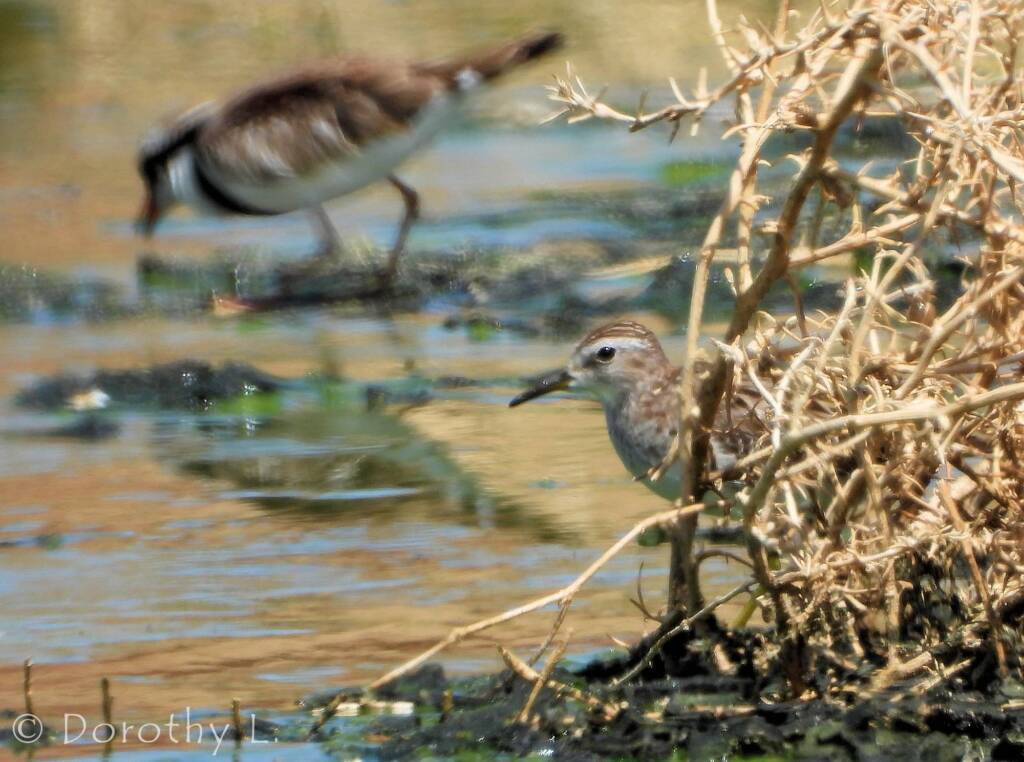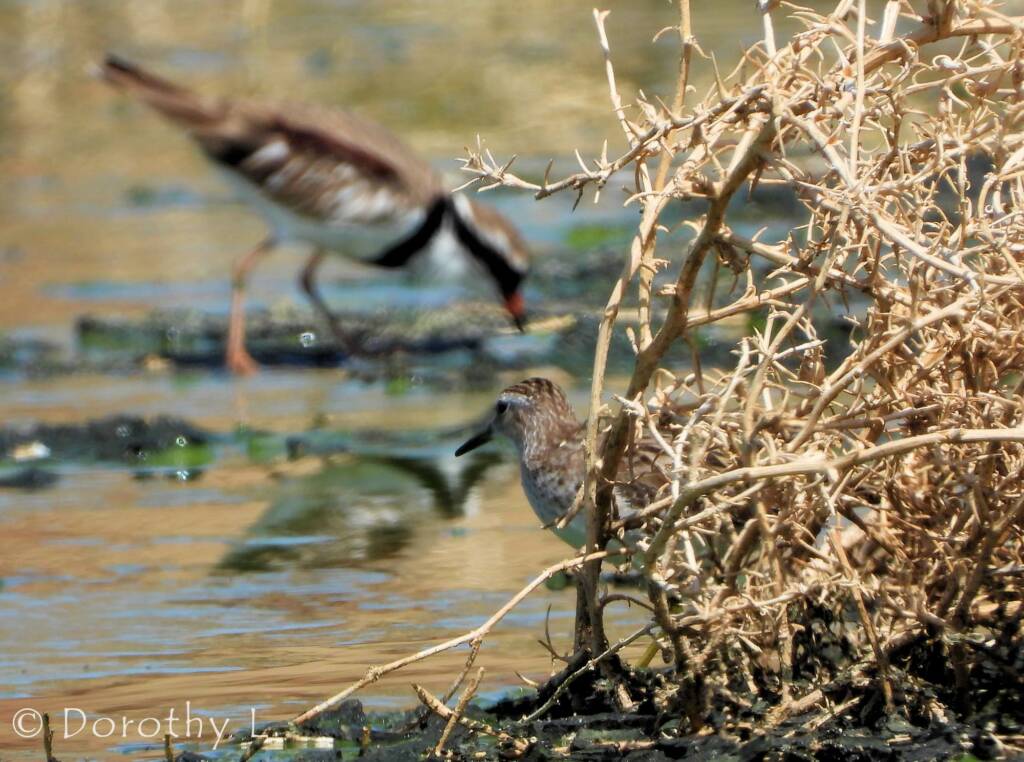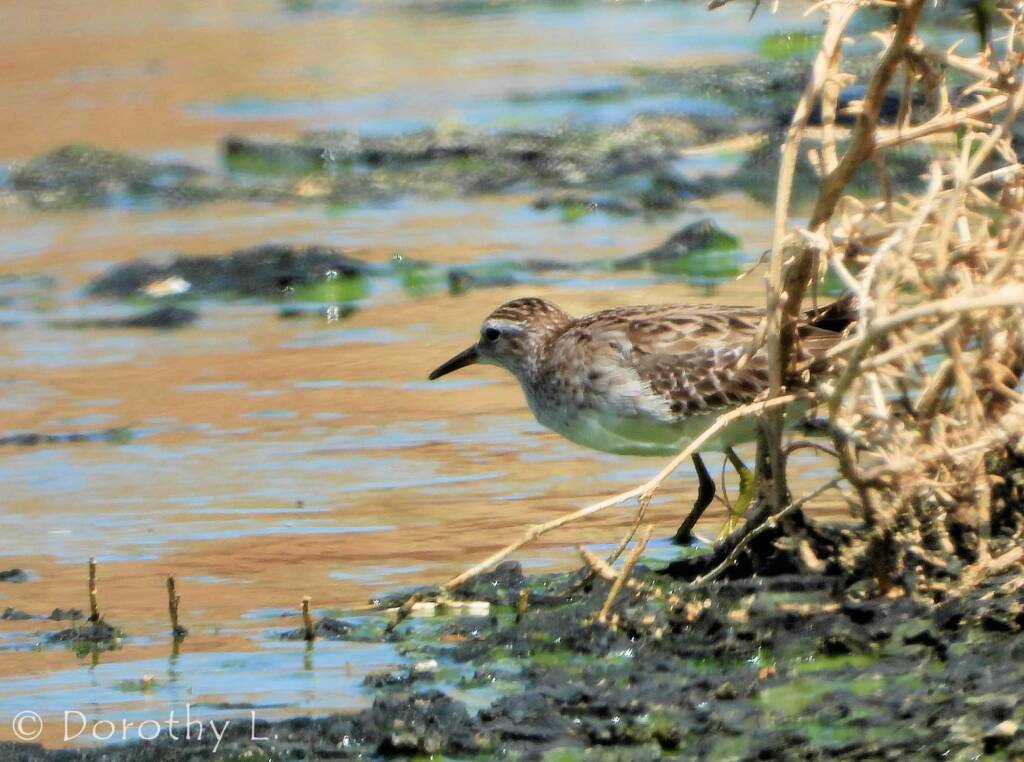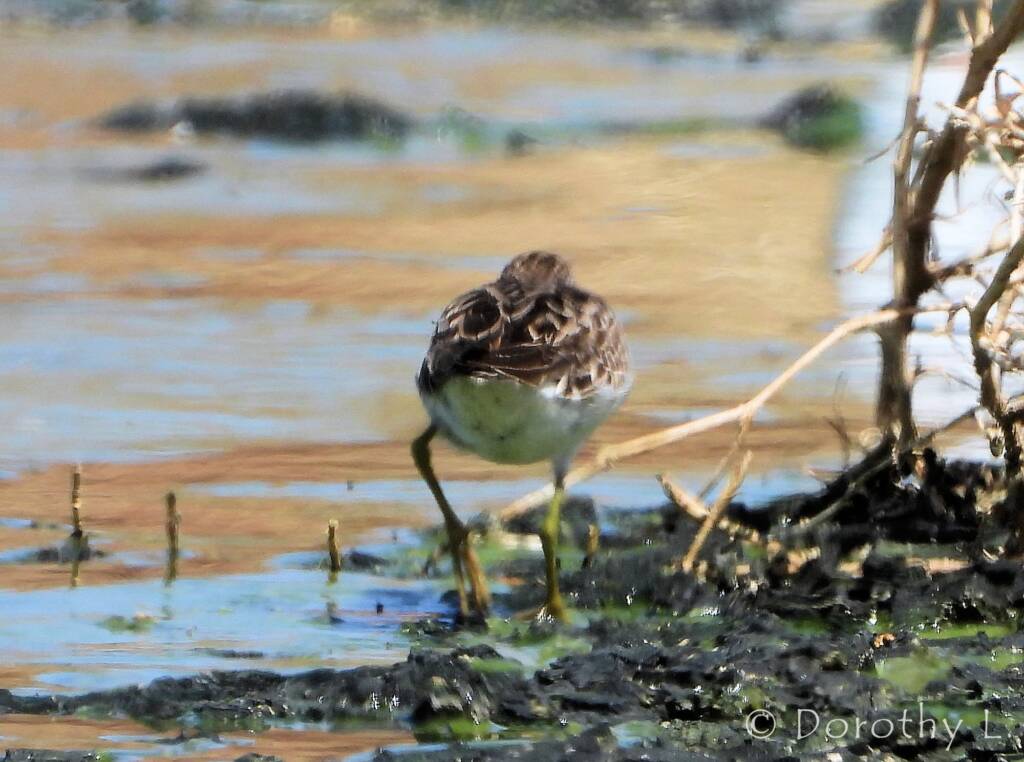Long-toed StintLong-toed Stint – mixed company
The Long-toed Stint (Calidris subminuta) is a small wader and unlike other small sandpipers, they have a distinctly long-winged and slender-size body appearance. Their upper breeding plumage has a bright scaled, chestnut brown and rufous colour, with darker blackish centre and white-sided rump and white underparts. They have spotted sides and upper breast, with brown crown and white eyebrows. The non-breeding plumage is greyish and white.
Apart from the inconspicuous, near-white eyebrows the head is brownish-grey streaked with light-grey or white, although during the breeding season the crown is streaked white-grey/rufous.
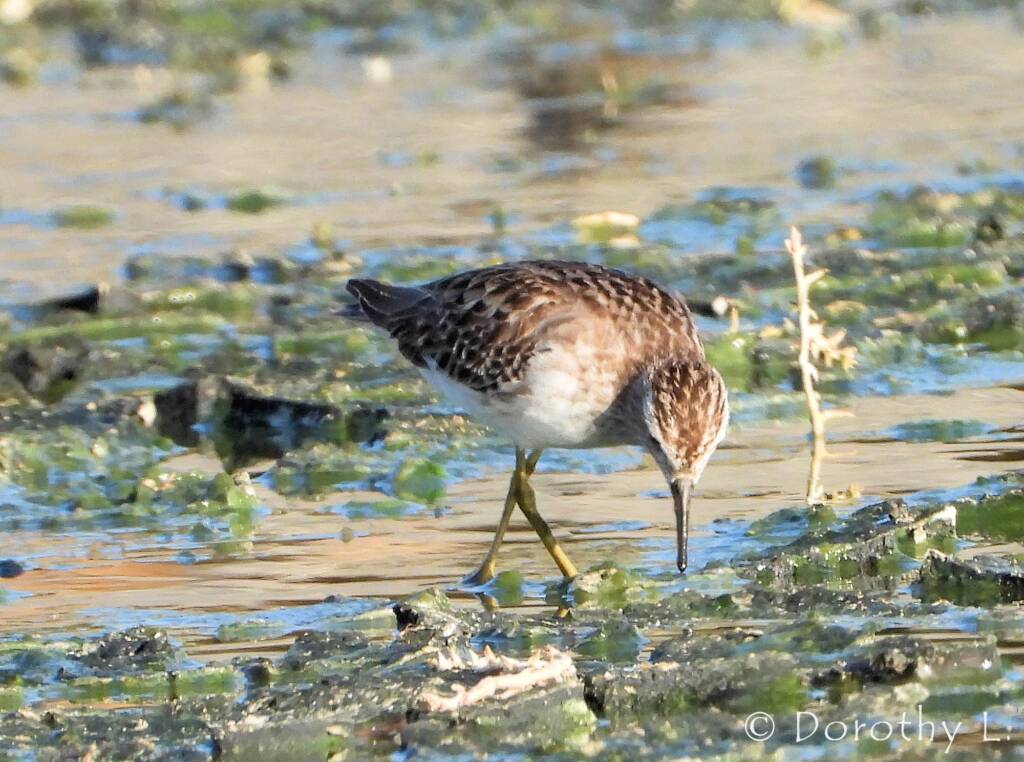
In flight, the wings have white bars visible and the toes are known to project slightly beyond the tail feathers, unlike other stints. The white tail feather has black central stripe with grey edges. The eyes have dark irises and they have a thin dark, slight decurved bill (the decurved bill may not be as obvious, especially in some photos), although some sources describe the the bill as straight. They have thin greenish-yellow legs.
They prefer habitats that have shallow freshwater and brackish wetlands (brackish marsh – being intertidal wetlands that are dominated by grasses, forbs and shrubs, especially those that tolerate slight to moderate salinities). They are found in coastal wetlands, as well as inland water sources, and have been sighted around sewage ponds and happily share the same habitats amongst other wader bird species.
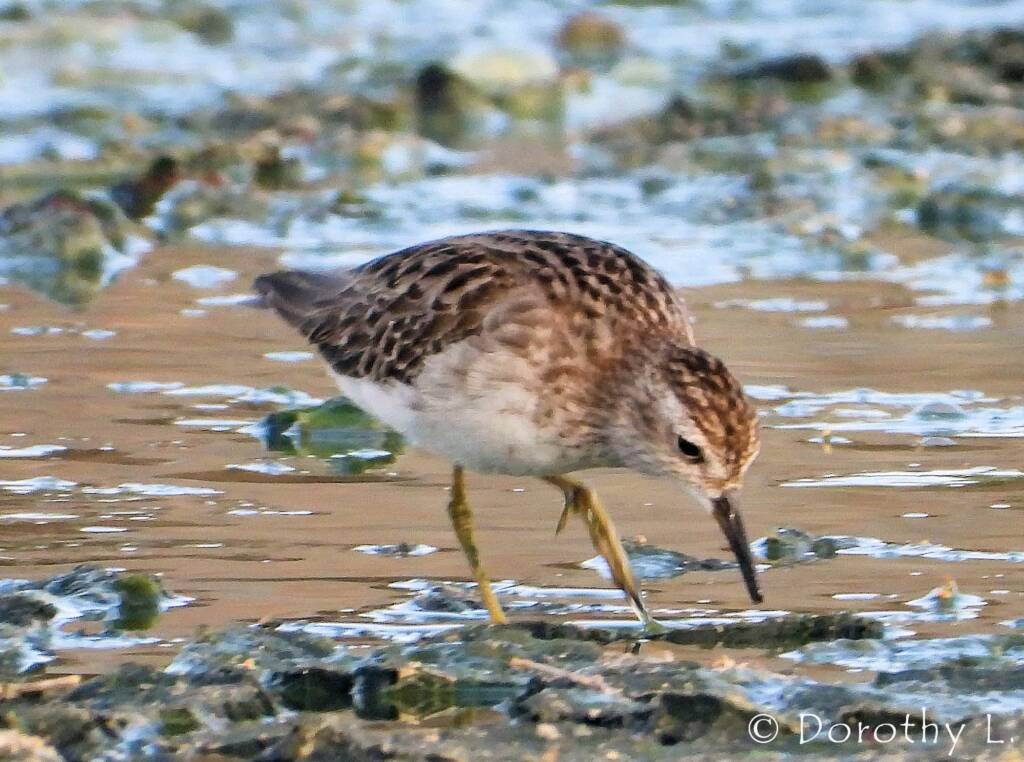
They have been confused with other species of stints and sandpiper, including the Red-necked Stint and Sharp-tailed Sandpiper (although the Sharp-tailed Sandpiper is a much larger bird).
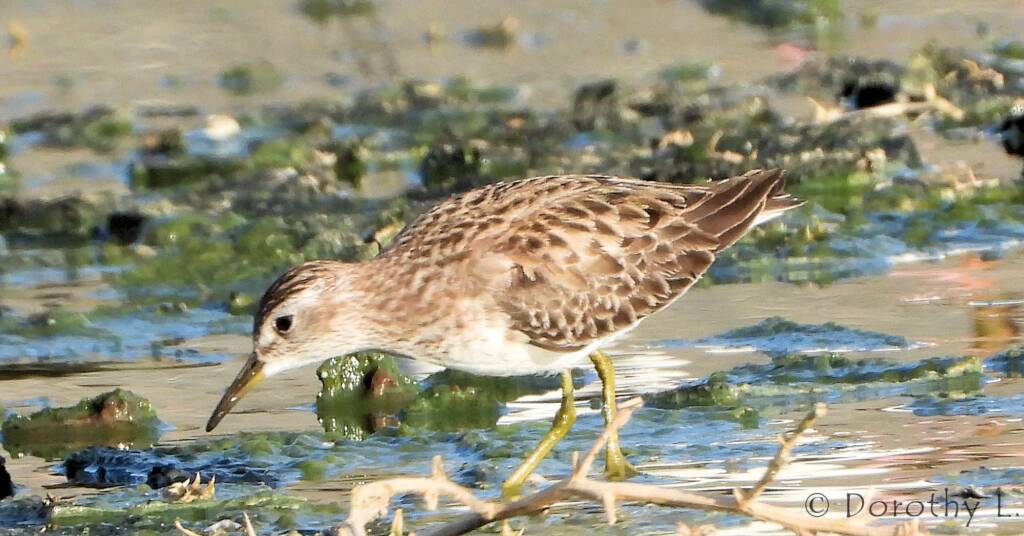
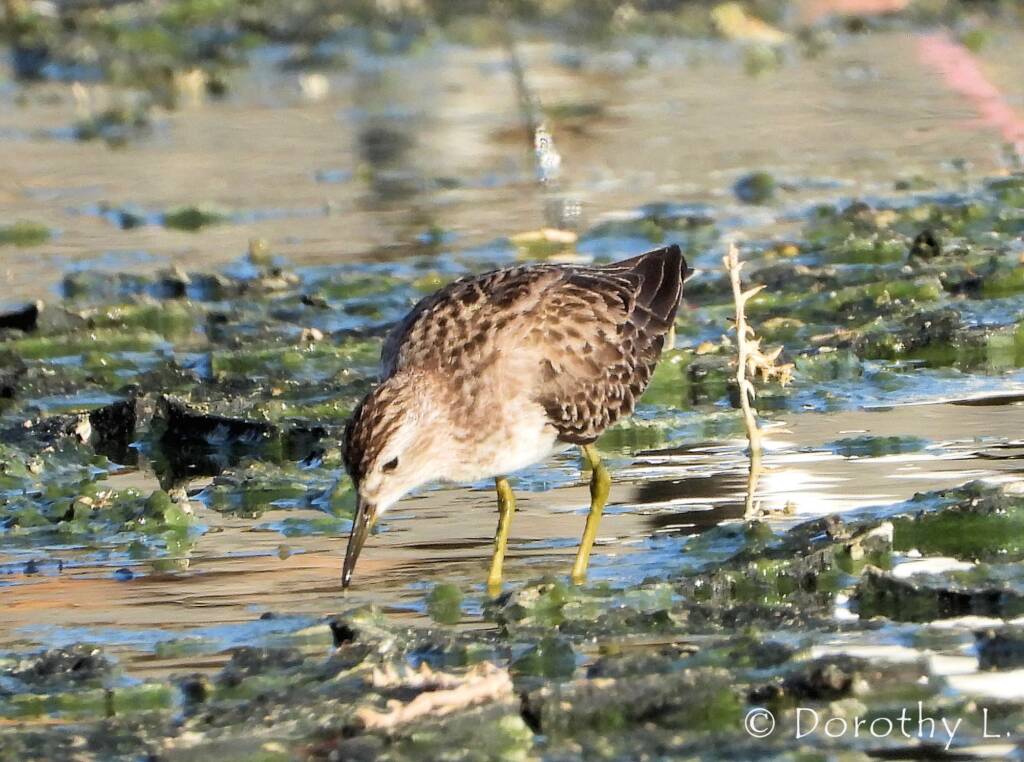

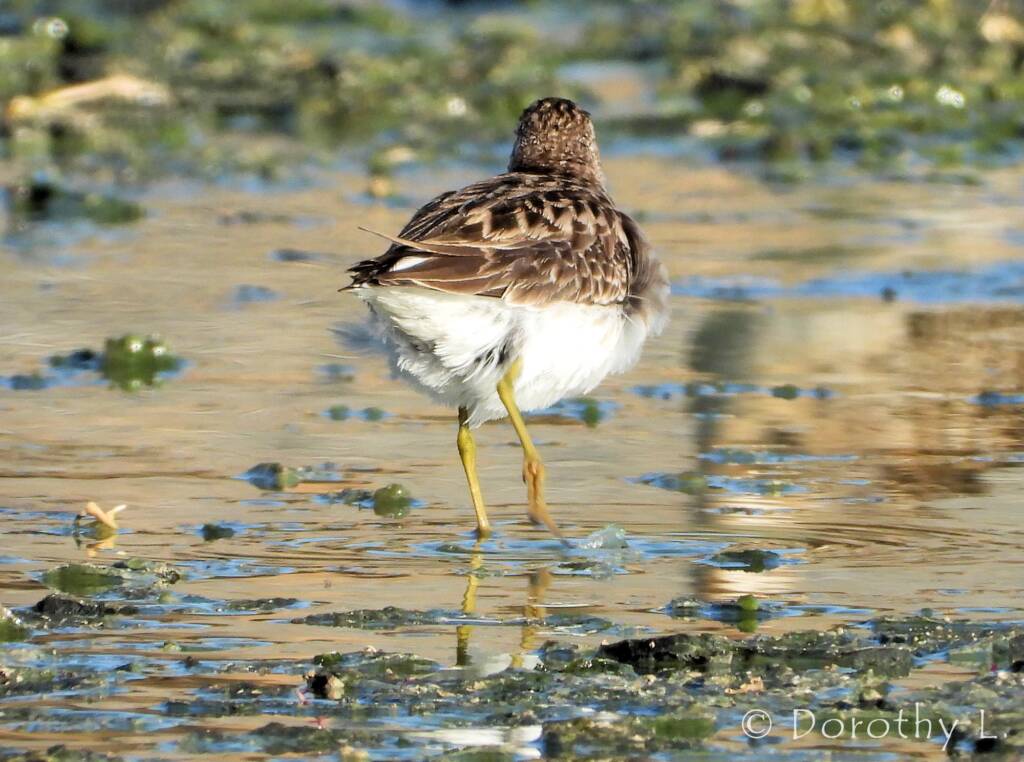

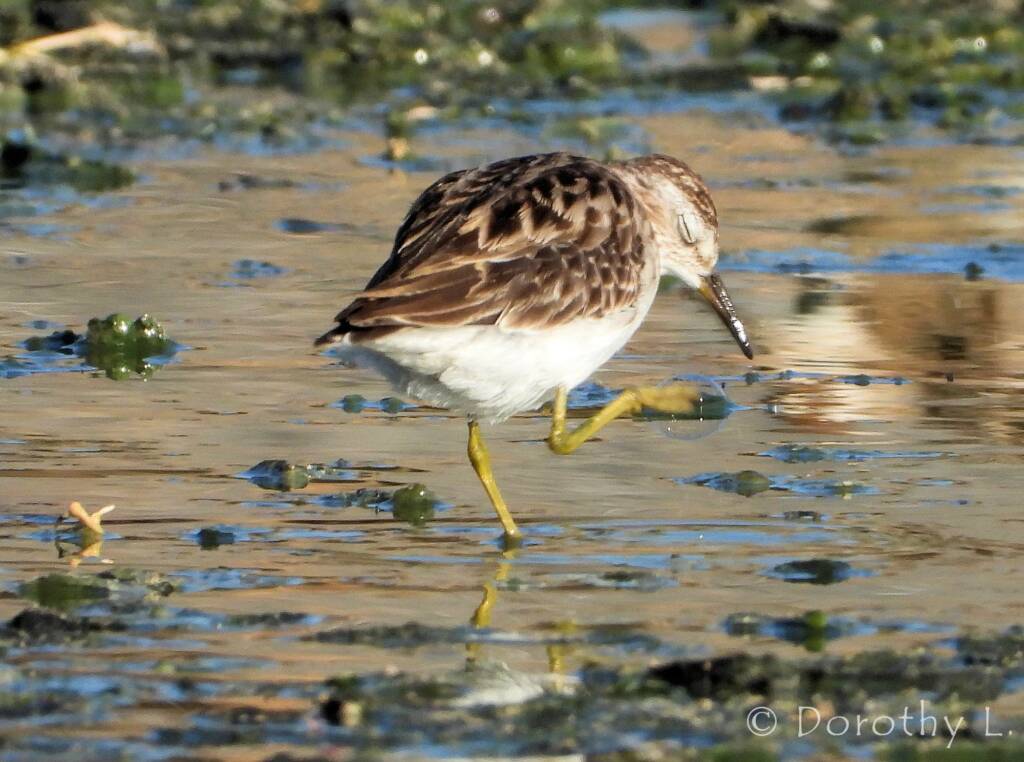

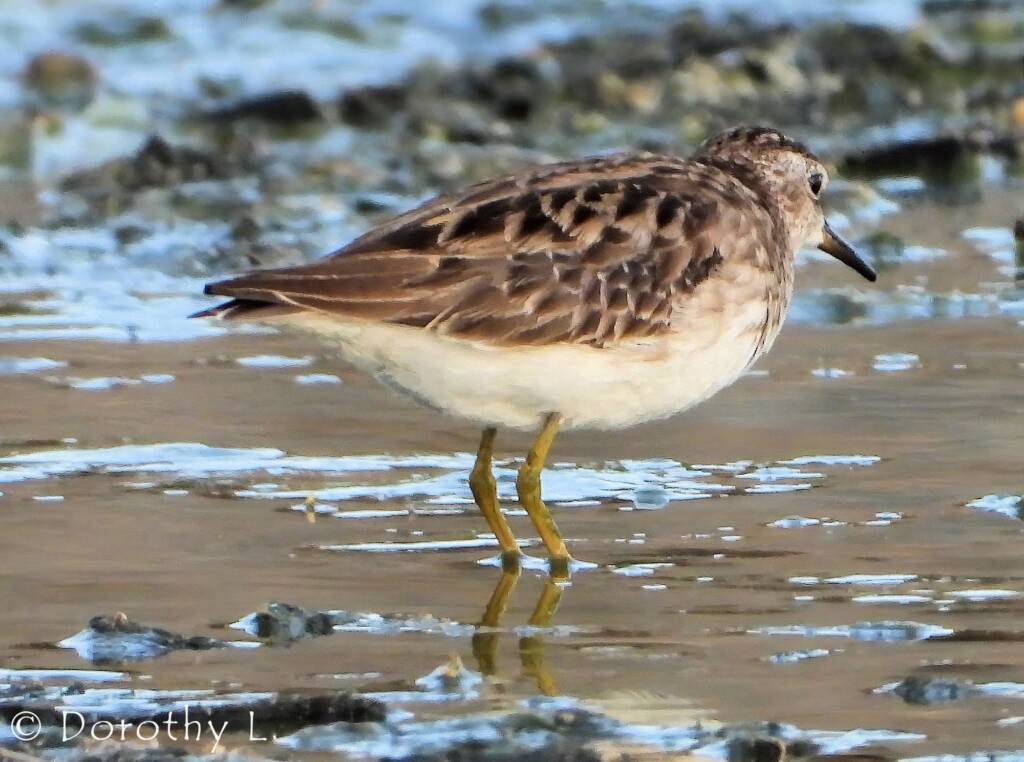


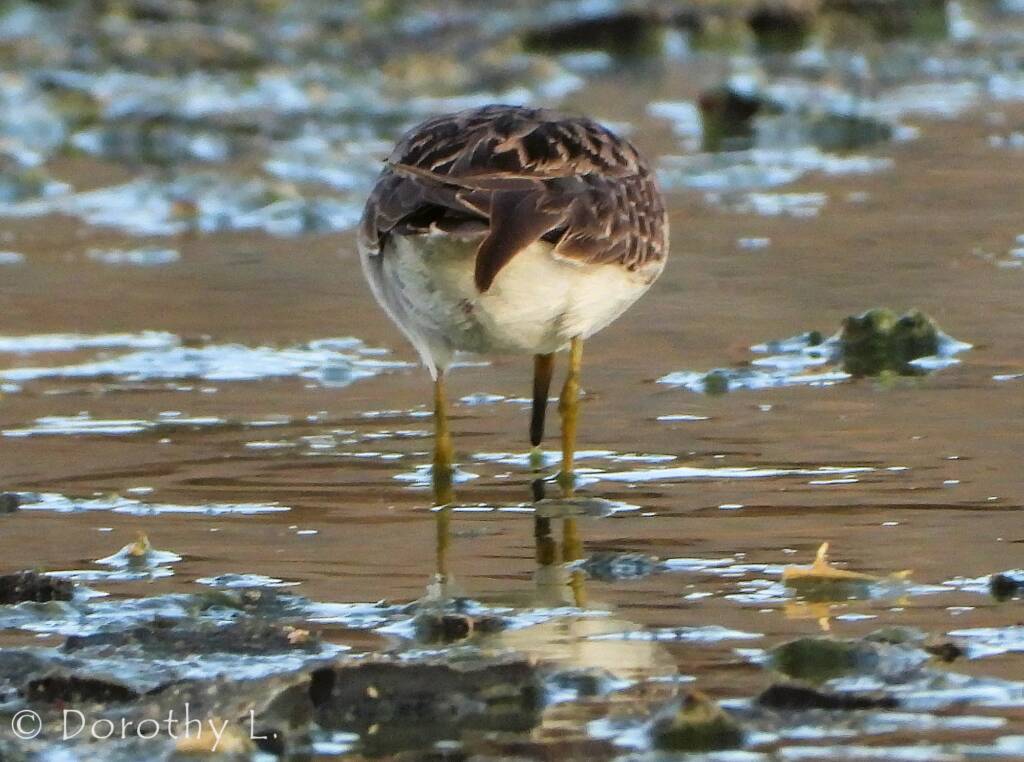
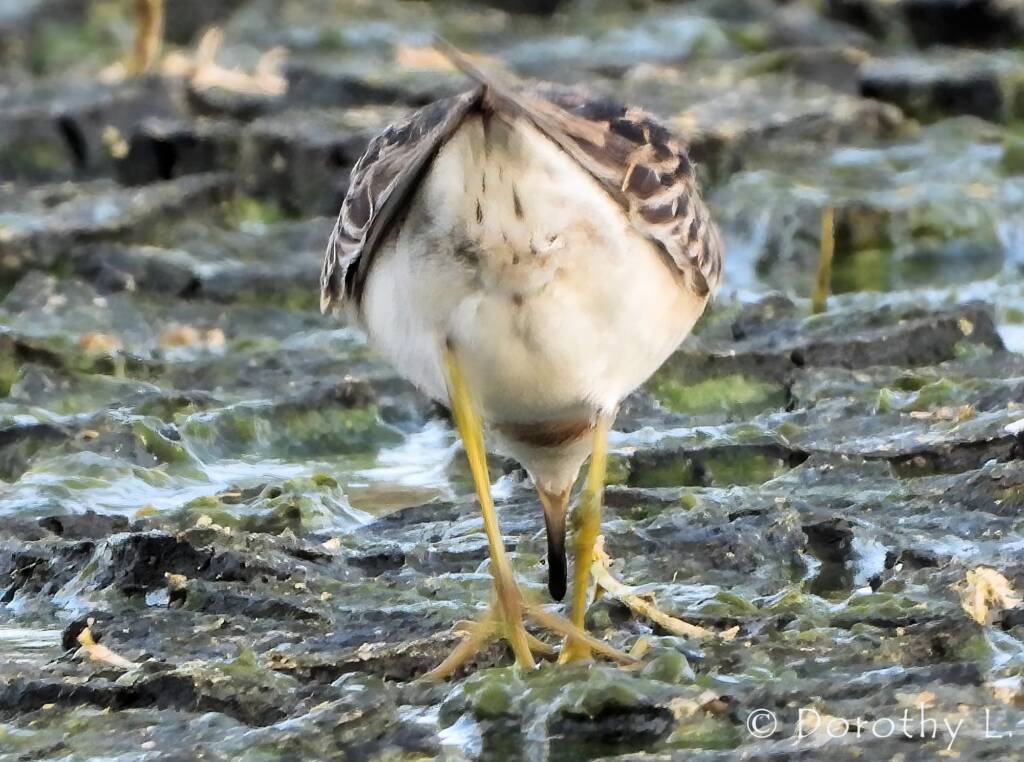
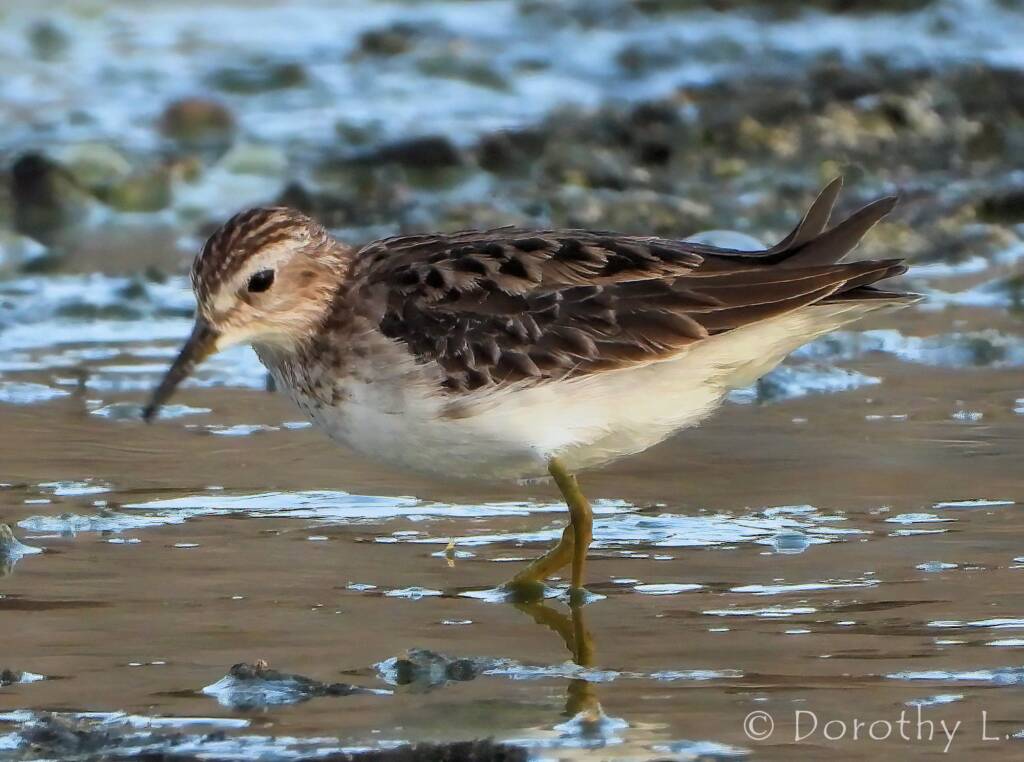
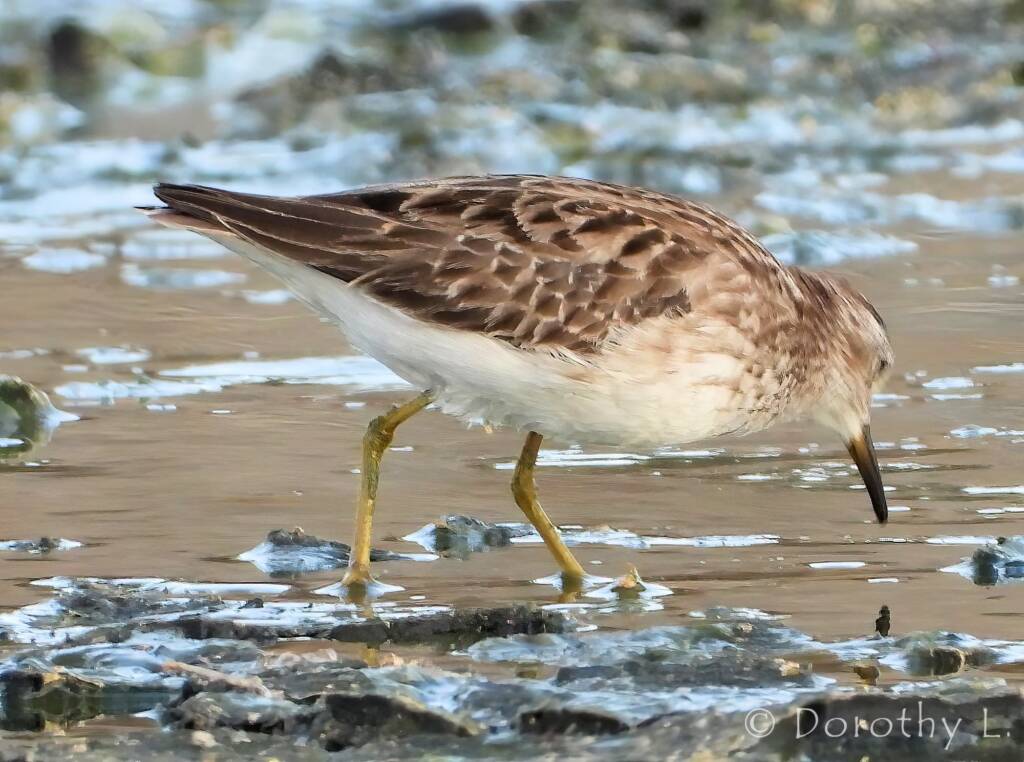
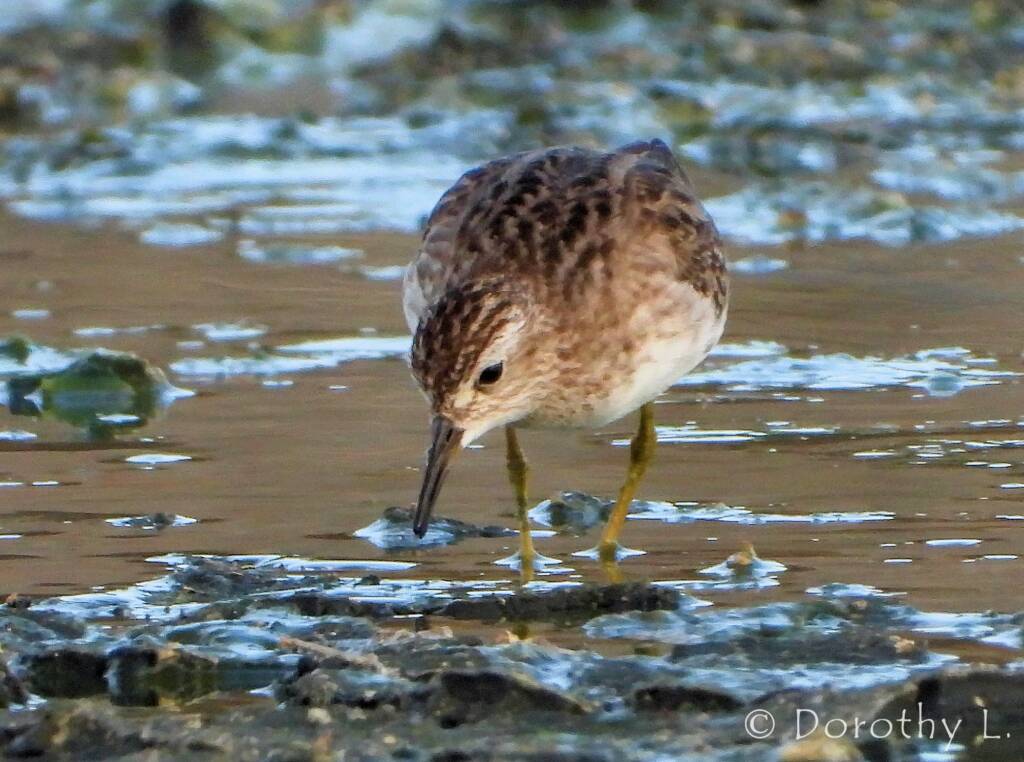
Other names
Long-toed Stint, Long-toed Sandpiper, Middendorf’s Stint.
- Scientific classification
- Kingdom: Animalia
- Phylum: Chordata
- Class: Aves
- Order: Charadriiformes
- Family: Scolopacidae
- Genus: Calidris
- Species: C. subminuta
- Binomial name: Calidris subminuta
Footnote & References
- Long-toed Stint, mdahlem.net, https://mdahlem.net/birds/8/lotstint.php
- Stint Identification, by Melissa Hafting, 19 august, 2017, Dare to Bird, https://daretobird.blogspot.com/2017/08/stint-identification.html
Long-toed StintLong-toed Stint – mixed company
WadersBanded Lapwing Bar-tailed Godwit Black-fronted Dotterel Glossy Ibis (Plegadis falcinellus) Hooded Plover Inland Dotterel Lesser Sand Plover Long-toed Stint Oriental Plover Pacific Golden Plover Pectoral Sandpiper Pied Stilt Red-necked Avocet Red-necked Stint Ruff Sanderling Sharp-tailed Sandpiper Sooty Oystercatcher
BirdsApostlebird Australasian Darter Australasian Figbird Australasian Gannet Australasian Grebe Australasian Pipit Australasian Robins Australasian Shoveler (Spatula rhynchotis) Australasian Wrens Australian Babblers Australian Bustard Australian Chats Australian Magpie Australian Pelican Australian Pratincole (Stiltia isabella) Australian White Ibis Bassian Thrush Black-faced Cormorant Black-faced Woodswallow Black Swan Bowerbirds Brolga Brown Songlark Channel-billed Cuckoo Cinnamon Quail-thrush Cormorants Cuckooshrikes and Allies Dotterels Lapwings Plovers Doves & Pigeons Emu Fairy Martin Finches Grey Fantail Grey Teal Honeyeaters Kingfishers Little Friarbird Little Grassbird Magpie-lark Masked Woodswallow Noisy Pitta Olive Whistler Paradise Riflebird Pardalotes Parrots Pheasant Coucal Pied Butcherbird Rainbow Bee-eater Raptors Rufous Fantail Redthroat Rufous Bristlebird Silver-crowned Friarbird Torresian Crow Waders Welcome Swallow (Hirundo neoxena) Whiskered Tern (Chlidonias hybrida) White-browed Woodswallow White Capped Noddy White-faced Heron White-necked Heron Willie Wagtail Yellow-throated Scrubwren

